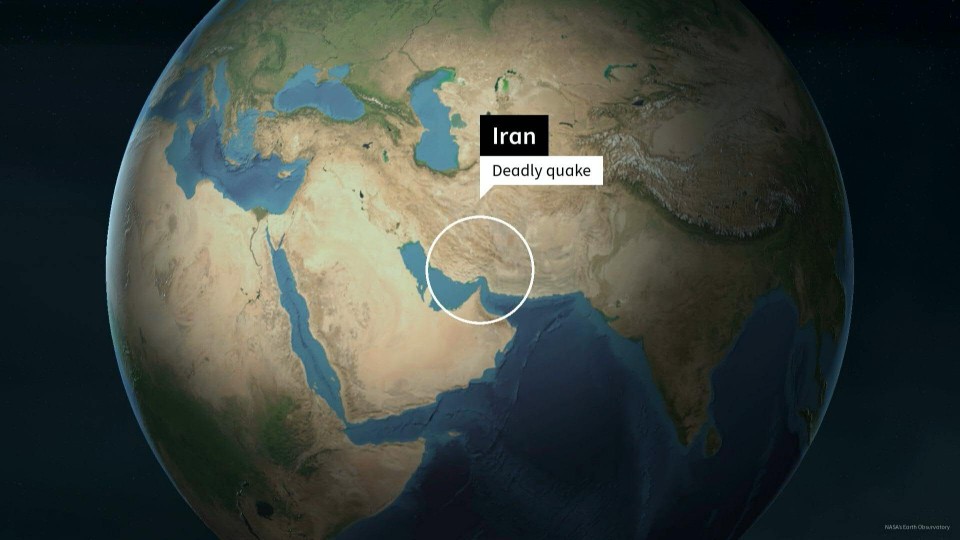
TEHRAN, Iran (AFP) — A series of strong earthquakes rocked southern Iran on Saturday, killing at least five people, injuring over 90 others and reducing an entire village to rubble.
The quakes, including two of magnitude 6.0, struck west of the major port city of Bandar Abbas in Hormozgan province, the US Geological Survey said.
The first rattled an area north of the town of Dezhgan shortly after 2:00 am (2130 GMT), before a 5.7 tremor hit two hours later followed quickly by the second 6.0 magnitude quake, the USGS said.
Five people were killed, Hormozgan governor Mehdi Dousti said, quoted by official news agency IRNA.
Dousti told state television that the village of Sayeh Khosh, close to the epicentre, had been “completely destroyed”.
“Ninety-three people were injured, of whom only seven are still in hospital for treatment,” national emergency services spokesman Mojtaba Khaledi told state television.
The broadcaster showed footage of residential buildings reduced to rubble in Sayeh Khosh, which was plunged into darkness in a power outage.
In another video, a family was seen sifting through debris and trying to recover their belongings, as a woman was heard screaming in the background.
Ambulances and other vehicles tried to navigate roads covered in rubble as shocked residents wandered through the streets.
People spent the night outdoors in the provincial capital Bandar Abbas — with a population of more than 500,000, located about 100 kilometres (60 miles) east of the epicentre — as long queues formed at gas stations there, state media reported.
Interior Minister Ahmad Vahidi visited Hormozgan province and told state television that restoring water and electricity were among the government’s top priorities.
– History of deadly quakes –
Iran’s Red Crescent Society said in the morning that search and rescue operations were nearly over.
“We are concentrating on housing the victims of the earthquake,” Hormozgan governor Dousti told state television.
A provincial heritage official told IRNA the quake damaged 50 historical windmills on Qeshm island, located just off the coast.
Iran sits astride the boundaries of several major tectonic plates and experiences frequent seismic activity.
The Islamic republic’s deadliest quake was a 7.4-magnitude tremor in 1990 that killed 40,000 people in the north, injured 300,000 and left half a million homeless.
In 2003, a 6.6-magnitude quake in southeastern Iran levelled the ancient mud-brick city of Bam and killed at least 31,000 people.
In November 2017, a 7.3-magnitude quake in Iran’s western province of Kermanshah killed 620 people.
In December 2019 and January 2020, two earthquakes struck near Iran’s Bushehr nuclear power plant.
Iran’s Gulf Arab neighbours have raised concerns about the reliability of the country’s sole nuclear power facility, which produces 1,000 megawatts of power, and the risk of radioactive leaks in case of a major earthquake.
In February 2020, a magnitude 5.7 earthquake in northwestern Iran killed nine people, including children, in neighbouring Turkey and injured dozens on both sides of the border.
One person was killed in November last year when Hormozgan province was hit by twin 6.4 and 6.3 magnitude quakes.
© Agence France-Presse







